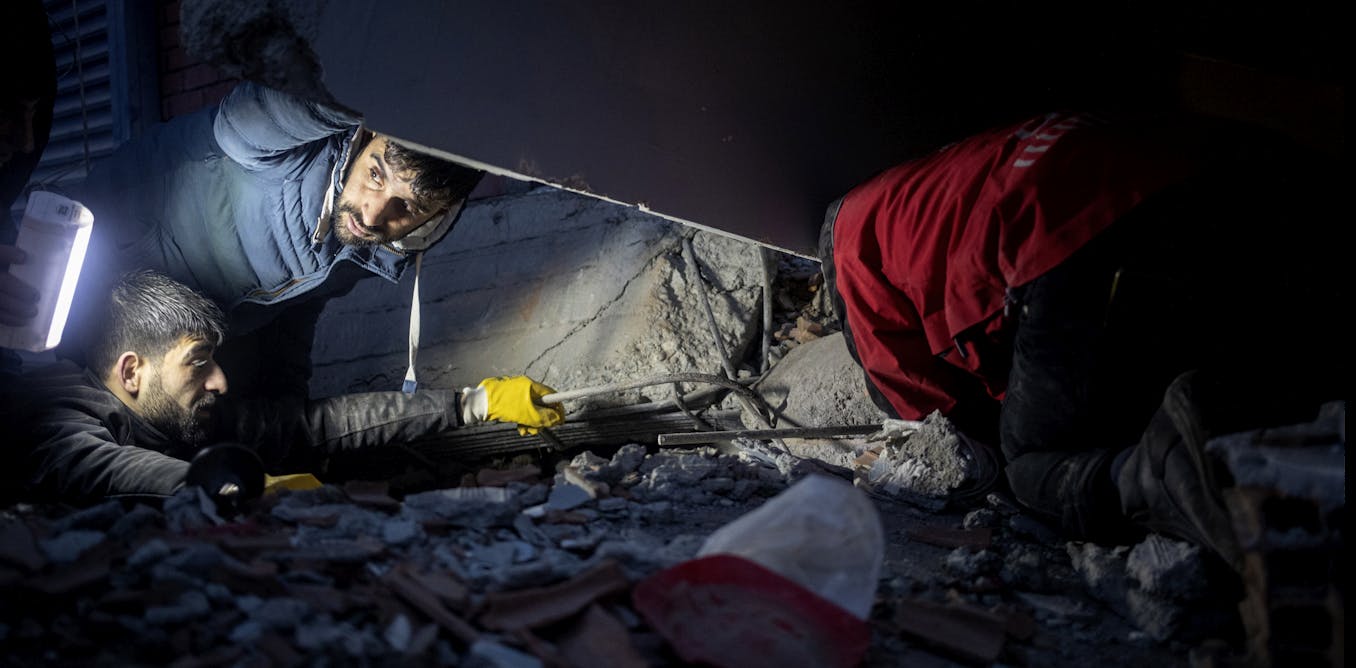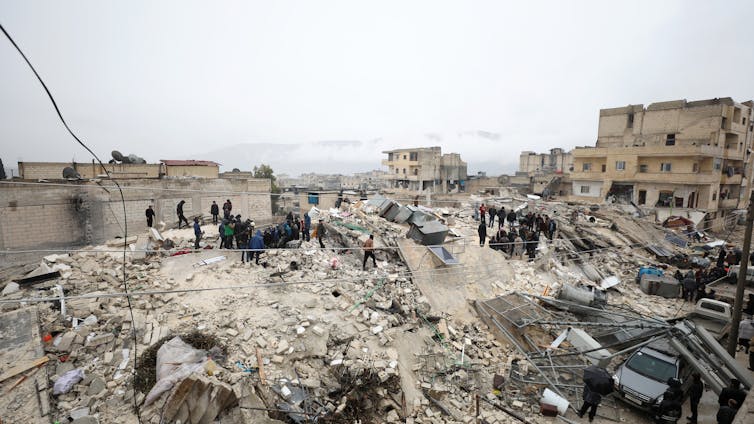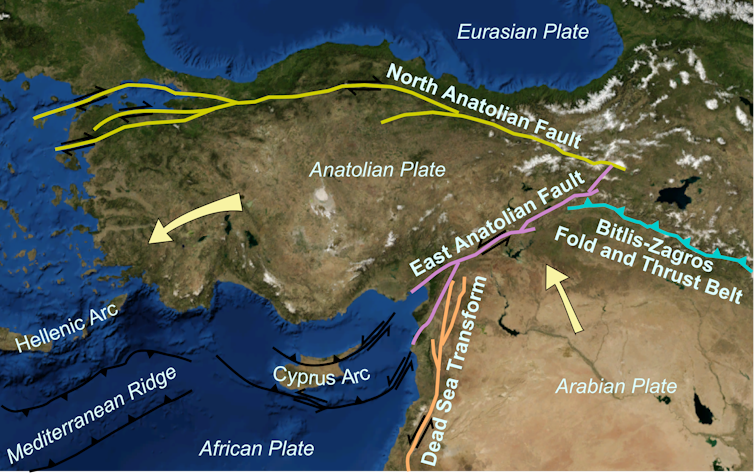The Sheer Scale and Scope Of It
We're going away, but we have no idea what will happen when we get there.""We have no goal. Even if there was a plan what good will it be after this hour?""I no longer have my father or my uncle. What do I have left?"Musa Bozkurt, 25, Adiyaman, Turkey"Those who have the means are leaving, but we're poor.""The government says, go and live there a month or two.""How do I leave my home? My fields are here, this is my home, how do I leave it behind?"Fuat Ekinei, 55, farmer, Adiyaman, Turkey"Everyone's saying they're not in charge. We can't find who's in charge.""I've been begging and begging for just one crane to lift the concrete ...""Time's running out. A crane, for God's sake."Keyser, Antakya, Turkey
 |
The woman who gives her name as Keyser in Antakya is desperate, but there is no one to help. Through "the stench of dead bodies waft[ing] through the cold, dusty air", her two sons, trapped below the rubble of their collapsed apartment building could be heard crying for rescue. She tried for two days to approach anyone with a vestige of authority to help rescue her children. In the end she failed. There was no one available, no emergency response leader she could make contact with, to order her sons' rescue.
A day later, neighbours reported that there were no more survivors pulled from the building's wreckage. "The general problem here is of organization, especially in the field of health", observed Onur Naci Karahanci, a doctor working out of Turkey's southeastern city of Adiyaman. There were not even enough body bags for the dead, an acute shortage in the first two days following the two earthquakes.
 |
| Collapsed buildings in Armanāz, Syria. EPA-EFE/Yahya Nemah |
The trembling of the earth collapsed thousands of buildings in countless towns and cities, leaving rubble under which were thousands of people, a scant handful of whom were rescued. Antakya in particular, known historically as Antioch, the capital of Hatay province. The damage realized in Turkey was estimated by the Turksh Enterprise and Business Confederation at $84.1 billion. Human life was destroyed to a total of 30,000 in Turkey alone.
Rescue teams flew in from various countries, both near Turkey and Syria, and from parts distant. Astonishing stories of survival and rescue have surprised and encouraged rescue teams, but the total, still growing, and standing at 36,000 dead is a grim reminder of the force and extent of the catastrophic natural disaster. On one occasion, a father with a child in his arms was rescued, in another a baby with its mother's hair clutched in its fist; a newborn; a 13-year-old boy saved a week after being buried alive
Over 150,000 survivors have been moved to shelters outside the affected provinces, according to Turkish authorities. Turkey is now a country that has been markedly changed, where the massive earthquakes cut a slash through the landscape shifting roads, bending and breaking rail lines, smashing buildings to the ground. There are now new canyons across the East Anatolian Fault running through southern Turkey and northern Syria.
The window for finding survivors is fading. Rescue work moving vast tonnages of steel and concrete to find anyone still alive is now turning to the need to complete the work of destroying unsafe buildings partially destroyed. The work of the moving tectonic plates; where the fault line that slipped to cause the quakes -- the East Anatolian between Turkeys Anatolian Plate and the Arabian Plate -- moving northward created a double disaster.
Turkey's geologic crust was altered in a few seconds when the plates slipped side to side leaving rail lines bent into S-curves, roads laterally split. Where an olive grove in Altinozu split in two leaving a 200-metre-wide rocky chasm between trees growing in neat rows, once side-by-side.
 |
| Arabia is bumping into Eurasia and pushing Anatolia westwards … or to non-earth scientists, Syria is bumping into Europe and squeezing out Turkey. Mikenorton/Nasa/wiki, CC BY-SA |
Labels: Death Toll, Earthquake, Natural Disasters, Search and Rescue, Survivors, Tectonic Plates, Turkey-Syria
0 Comments:
Post a Comment
<< Home